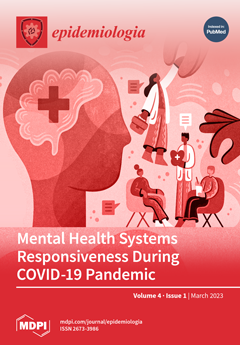Complementary and Alternative Medicines/Therapies (CAM) are commonly used by US asthma adults, yet little is known about recent trends in their use. Our aim was to report trends in CAM use among US adults with current asthma. We conducted a serial cross-sectional study
[...] Read more.
Complementary and Alternative Medicines/Therapies (CAM) are commonly used by US asthma adults, yet little is known about recent trends in their use. Our aim was to report trends in CAM use among US adults with current asthma. We conducted a serial cross-sectional study using nationally representative data from the BRFSS Asthma Call-Back Survey (ACBS) collected between 2008 and 2019 (sample size per cycle, 8222 to 14,227). The exposure was calendar time, as represented by ACBS cycle, while the main outcomes were use of at least one CAM and eleven alternative therapies. We analyzed CAM use overall and by population subgroups based on age, gender, race/ethnicity, income, and daytime and night-time asthma symptoms. Our findings show that there was an increase in the use of at least one CAM from 41.3% in 2008 to 47.9% in 2019 (
p-trend < 0.001) and an upward trend in the use of herbs, aromatherapy, yoga, breathing exercises, homeopathy, and naturopathy (
p-trend < 0.05). However, the use of vitamins, acupuncture, acupressure, reflexology, and other CAM therapies remained stable (
p-trend > 0.05). These trends varied according to population characteristics (age, sex, race, income) and asthma symptoms. In conclusion, our study suggests that CAM use among US adults with current asthma is either increasing or stable, and further studies are needed to explore the factors influencing these trends.
Full article





